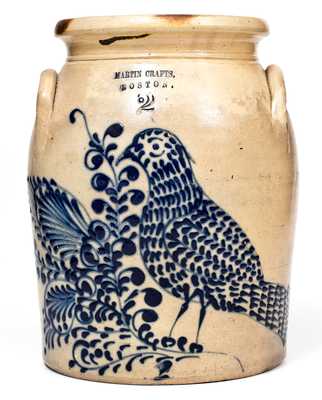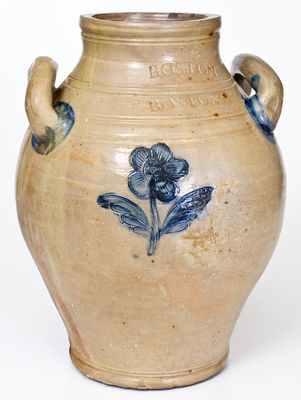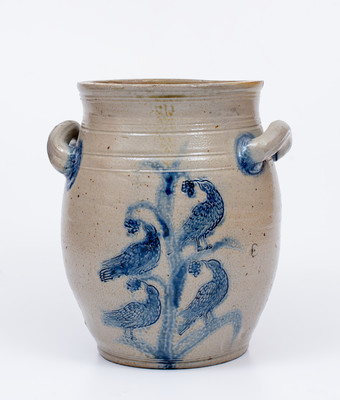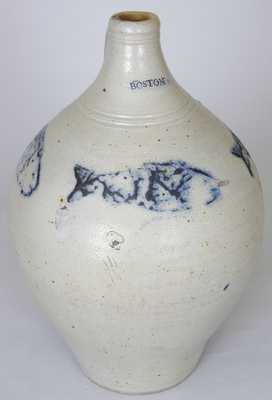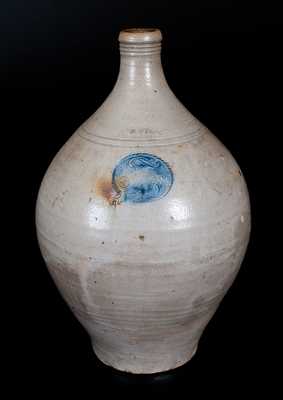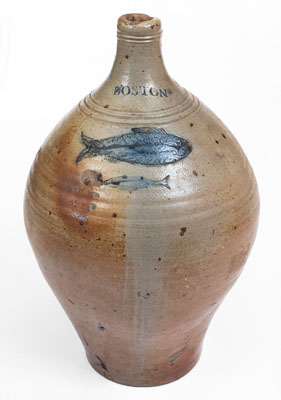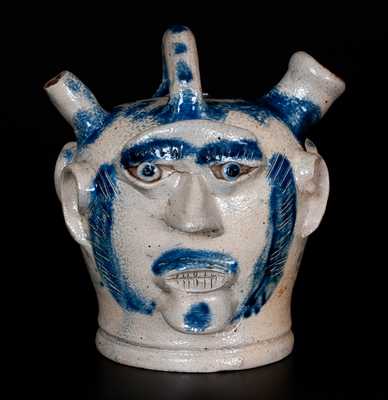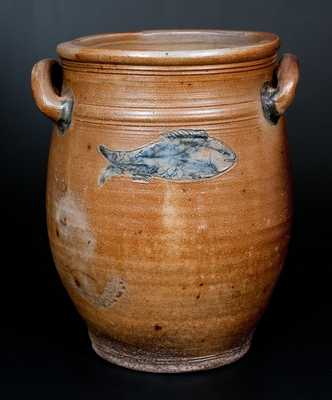Exceedingly Rare and Important Three-Gallon Stoneware Jar with Impressed Indian Motif, Stamped Twice "BOSTON.," attributed to Jonathan Fenton, Boston, MA, late 18th century, baluster-form jar with footed base, ovoid body, and tall narrow collar, the shoulder and rim heavily-decorated with incised banding, the sides fitted with open loop handles. Impressed twice on the front with the earliest "BOSTON." maker's mark flanking an impressed design of a standing Indian with feathered headdress, belted tunic, and mocassins, holding a bow and downward-pointing arrow, beside a five-pointed star. A second cobalt-highlighted Indian design appears on the reverse. Additional heavy cobalt highlights to handle terminals. The distinctive Indian motif on this jar is based upon the State Seal of Massachusetts, designed in 1780 by a man named Nathan Cushing and engraved by Paul Revere. Revere based his design on the following instructions: "An Indian dressed in his shirt, mogossins, belted proper- in his right hand a bow- in his left, an arrow, its point toward the base, on the dexter side of Indian's head, a star for one of the United States of America. . ." (Goss, Life of Revere, p. 429). This specific design was modeled after the first seal of the Massachusetts Bay colony, which was used throughout most of the 17th century and depicted an Indian with leaf-covered groin and downward-pointing arrow, symbolizing peace. This auction provides a rare opportunity to acquire a highly important early American ceramic work, made not long after the founding of our country. Its Indian motif imbues the jar with wonderful decorative appeal, as well as distinctly American subject matter. We are unaware of any examples of American stoneware with confirmed 18th century age thar bear a decoration of a Native American, and this jar is possibly the first documented piece. We can additionally find no other record of a Boston Indian jar ever coming to auction. Coupled with its extremely rare figural design is a classic, early Fenton form reminiscent of a Grecian urn. An outstanding and historically-significant example of 18th century stoneware, connected in its design to the American Revolution. References: Eldridge Henry Goss, The Life of Colonel Paul Revere (Boston: G.K. Hall & Co., Gregg Press, 1972). Bottom broken into pieces and reglued, with a small loss to underside and cracks extending onto base, including some chipping along cracks on underside. In-the-firing contact mark to reverse. A few other minor in-the-firing contact marks, typical of stoneware from this period. H 13 3/4".






